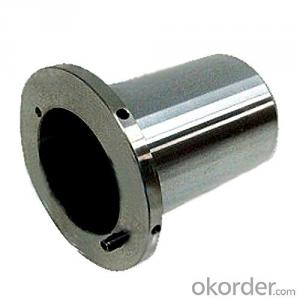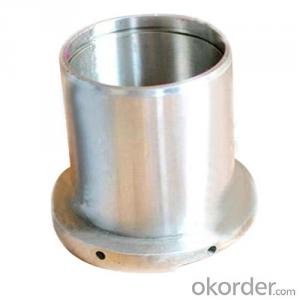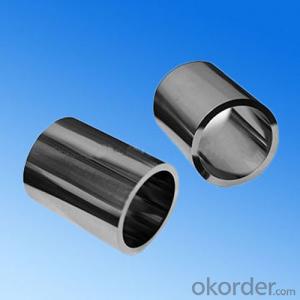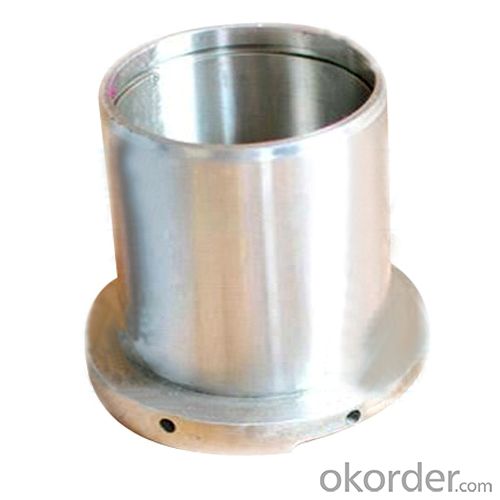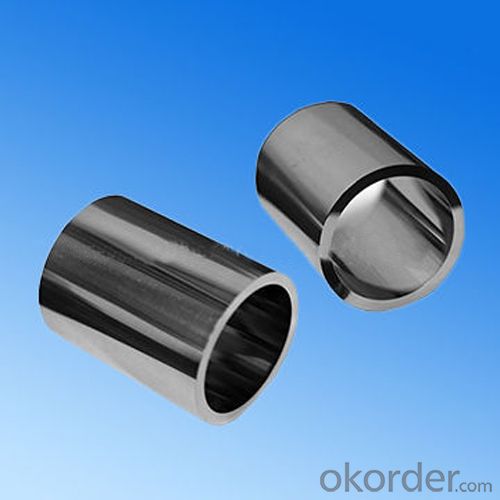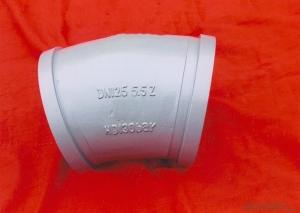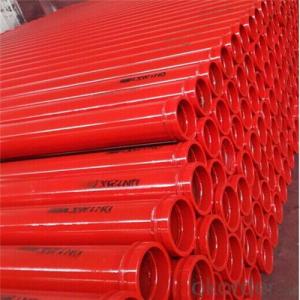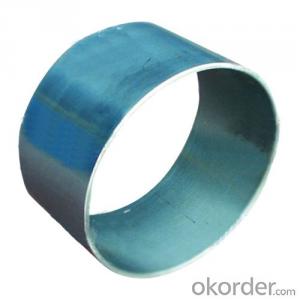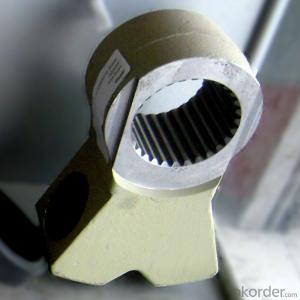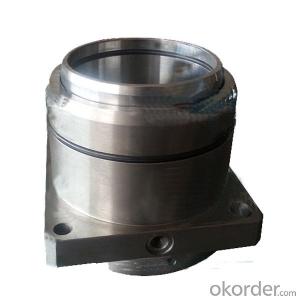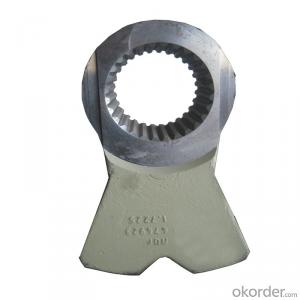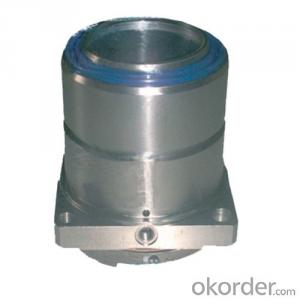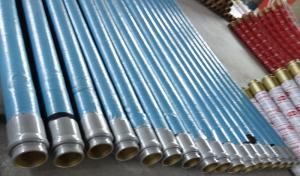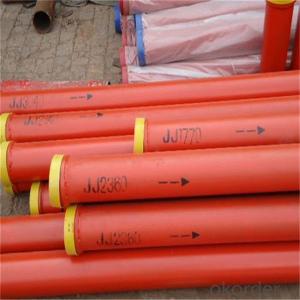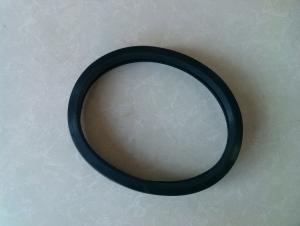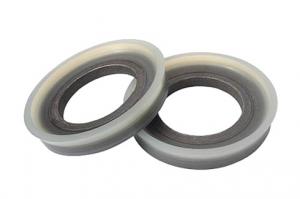Wear Sleeve Q90 Concrete Pump Parts High Quality
- Loading Port:
- Shanghai
- Payment Terms:
- TT OR LC
- Min Order Qty:
- 1 pc
- Supply Capability:
- 1000 pc/month
OKorder Service Pledge
OKorder Financial Service
You Might Also Like
Product information:
Wear Sleeve is the basic material among the frictional materials
They are widely used as the basic components for sealing
And the Wear Sleeve are widely adopted in petrochemical
industry due to its excellent performances such as wear ability, anti corrosion
Wear Sleeve is widely known for its durability and quality
It can withstand high pressure and is resistant to corrosion, so is used in water pumps, oil pumps and various other pumps
Today, Wear Sleeve has been playing an important role in the field of long working parts material
Salient features:
Special carbide grade developed for this application
Good cutting edge retention
Good functional lifespan
Applications:
Wear Sleeve is often used in concrete pumps.
Advantages of our products:
Made from 100% virgin raw material
Produced with advanced equipment
All products go through in-process and final inspection
Free technical service online
FAQ:
Q1: How long about delivery time?
A1: Normally we keep the raw materials for old customers and sometime we also keep stock products to make sure delivery time in any emergency cases.
Q2: How do we guarantee the quality of our pipes?
A2: We have established an advanced quality management system which conducts strict quality tests at every step, from raw materials to the final product. At the same time, we provide extensive follow-up service assurances as required.
Q3: How soon can we receive the product after purchase?
A3: Within three days of placing an order, we will book the vessel for goods. The specific shipping date is dependent upon international and government factors, but is typically 7 to 30 workdays.
Q4: If we can produce some pipes according to customers request?
A4: Yes, we can produce Concrete Placing Boom according to the difference country situations to make it suitable to the market and customers. We have very professional technical team to make the design.
Q5: How to make a quick resolution for after service?
A5: OKorder and our manufacture both have overseas branches all-around of world, If needed,
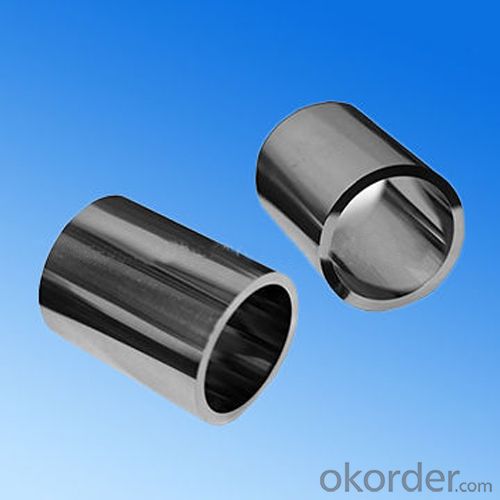
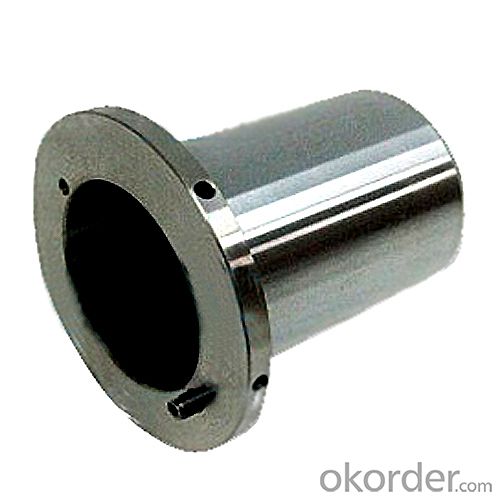
- Q: How do I properly maintain and replace hydraulic hoses in concrete pump spare parts?
- Proper maintenance and replacement of hydraulic hoses in concrete pump spare parts involve a few essential steps. Firstly, it is crucial to regularly inspect the hoses for signs of wear, including cracks, leaks, or bulges. Any damaged hoses should be replaced immediately to avoid any potential accidents or disruptions in the pumping process. When replacing hydraulic hoses, it is essential to use high-quality hoses that are compatible with the concrete pump system. It is recommended to consult the manufacturer's guidelines or seek professional advice to ensure the correct specifications and fittings are used. During installation, make sure to properly clean and prepare the hose fittings and connections. This involves removing any debris or dirt that could cause contamination or hinder a secure connection. Additionally, it is essential to follow the recommended torque specifications when tightening the fittings to prevent over-tightening or under-tightening, which can lead to leaks or hose failure. Regular maintenance also includes regularly checking and replacing hydraulic oil and filters according to the manufacturer's recommendations. This helps to ensure optimal performance and prolong the lifespan of the hydraulic hoses and other components. Overall, proper maintenance and replacement of hydraulic hoses in concrete pump spare parts require regular inspections, the use of high-quality hoses, proper cleaning and preparation during installation, correct torque specifications, and adherence to manufacturer guidelines for maintenance and replacement intervals.
- Q: How often should hopper agitator shaft seals be replaced in a concrete pump?
- The frequency at which hopper agitator shaft seals should be replaced in a concrete pump depends on several factors such as the type of pump, the amount of usage, the operating conditions, and the maintenance practices followed. Generally, hopper agitator shaft seals should be inspected regularly for signs of wear, damage, or leakage. If any issues are detected, they should be addressed promptly to prevent further damage. However, as a rough guideline, these seals may need to be replaced every 6 to 12 months or after approximately 500 to 1,000 operating hours. It is important to note that this is just an estimate, and the actual replacement frequency may vary. Factors such as the quality of the seals, the intensity of usage, and the conditions in which the pump operates can significantly influence the lifespan of the seals. Additionally, regular maintenance and proper lubrication can help extend the longevity of the seals. To ensure optimal performance and prevent potential issues, it is advisable to consult the manufacturer's recommendations and guidelines specific to the concrete pump model being used. Following their guidelines and regularly inspecting the seals will help determine the appropriate replacement interval for the hopper agitator shaft seals and ensure the pump operates efficiently.
- Q: How much is the pump for a month?
- Excluding oil costs, each side of the soil about 0.5 oil (Sany E series pump), the 7000 sides will be about 3500L oil X7.33=3 yuan, remove the wages of workers (4 per person 5000=2 million)
- Q: What is the function of a concrete pump remote control?
- The function of a concrete pump remote control is to allow operators to control the movement and operation of a concrete pump from a distance. This remote control enables precise and efficient placement of concrete, allowing the operator to adjust the pump's speed, direction, and other functions, ensuring the accurate and controlled delivery of concrete to the desired location.
- Q: What is the function of a concrete pump control box?
- The concrete pump control box is a vital component of a concrete pump system, responsible for managing and controlling the operation of the pump to ensure a safe and efficient pumping process. By utilizing the control box, the operator can initiate, halt, and adjust the pumping speed of the concrete pump. Equipped with various control switches, knobs, and buttons, the control box facilitates control over different aspects of the pumping process. One of the key roles of the control box is to monitor the pressure and flow of the pumped concrete. This data is essential in guaranteeing that the concrete is pumped at the desired rate and consistency. Furthermore, the control box promptly notifies the operator of any irregularities or problems in the pumping system, such as clogs or blockages. Moreover, the control box may incorporate features like emergency stop buttons and safety interlocks to ensure the safety of both the operator and the equipment. Indicators and alarms may also be included to provide visual and audible cues regarding the pump's status and any potential issues that may arise. To summarize, the concrete pump control box's purpose is to equip the operator with the necessary controls and information to operate the concrete pump safely and efficiently. It ensures appropriate monitoring, control, and safety of the pumping process, ultimately leading to successful concrete placement.
- Q: What is the purpose of a concrete pump cleaning ball?
- The purpose of a concrete pump cleaning ball is to clean out residual concrete and debris from the pumping system, ensuring proper functioning and preventing blockages or clogs.
- Q: How can I determine if the concrete pump cylinder needs replacement?
- To determine if the concrete pump cylinder needs replacement, you can perform a few inspections and tests. 1. Visual inspection: Look for any visible signs of wear and tear on the cylinder, such as cracks, dents, or corrosion. Additionally, check for any leaks or excessive hydraulic fluid around the cylinder. 2. Performance evaluation: Pay attention to the pump's performance during operation. If you notice a decrease in pumping efficiency, irregular flow, or decreased pressure, it could indicate a problem with the cylinder. 3. Pressure testing: Conduct a pressure test to determine if the cylinder can handle the required pressure. This can be done by isolating the cylinder and pressurizing it to a level higher than what it typically experiences during operation. If the cylinder fails to maintain pressure or shows signs of leakage, it may be time for a replacement. 4. Cylinder stroke measurement: Measure the stroke length of the cylinder during operation. Uneven stroke lengths can indicate internal damage to the cylinder and may require replacement. 5. Consultation with experts: If you are unsure about the condition of the cylinder, it is advisable to consult with professionals or experts in the field. They can provide you with a more accurate assessment and recommend the appropriate course of action, which may include cylinder replacement. Keep in mind that regular maintenance and inspections are crucial for the longevity and efficient operation of the concrete pump. It is always better to address potential issues early on to avoid further damage or accidents.
- Q: Can I get spare parts for both single-cylinder and multi-cylinder concrete pumps?
- Yes, you can get spare parts for both single-cylinder and multi-cylinder concrete pumps. Many manufacturers and suppliers offer spare parts for different types of concrete pumps, including both single-cylinder and multi-cylinder models. These spare parts can include components such as hydraulic cylinders, pistons, seals, valves, hoses, and other essential parts that may need replacement due to wear and tear or damage. It is essential to reach out to the specific manufacturer or supplier of your concrete pump to inquire about the availability and compatibility of spare parts for your particular model.
- Q: How to judge the concrete pipeline blockage?
- When the conveying pressure increases gradually, while the material level of the hopper does not fall, the pipe outlet is not out of stock, the pump vibrates, and the pipe is accompanied by strong vibration and displacement, the pipe blockage can be determined.
- Q: How can one determine the correct weight and balance requirements for concrete pump spare parts?
- To determine the correct weight and balance requirements for concrete pump spare parts, one should refer to the manufacturer's specifications and guidelines. These documents usually provide information on the recommended weight limits and distribution for each spare part. Additionally, consulting with industry professionals or engineers with expertise in concrete pump systems can help ensure accurate weight and balance calculations.
Send your message to us
Wear Sleeve Q90 Concrete Pump Parts High Quality
- Loading Port:
- Shanghai
- Payment Terms:
- TT OR LC
- Min Order Qty:
- 1 pc
- Supply Capability:
- 1000 pc/month
OKorder Service Pledge
OKorder Financial Service
Similar products
Hot products
Hot Searches
Related keywords
